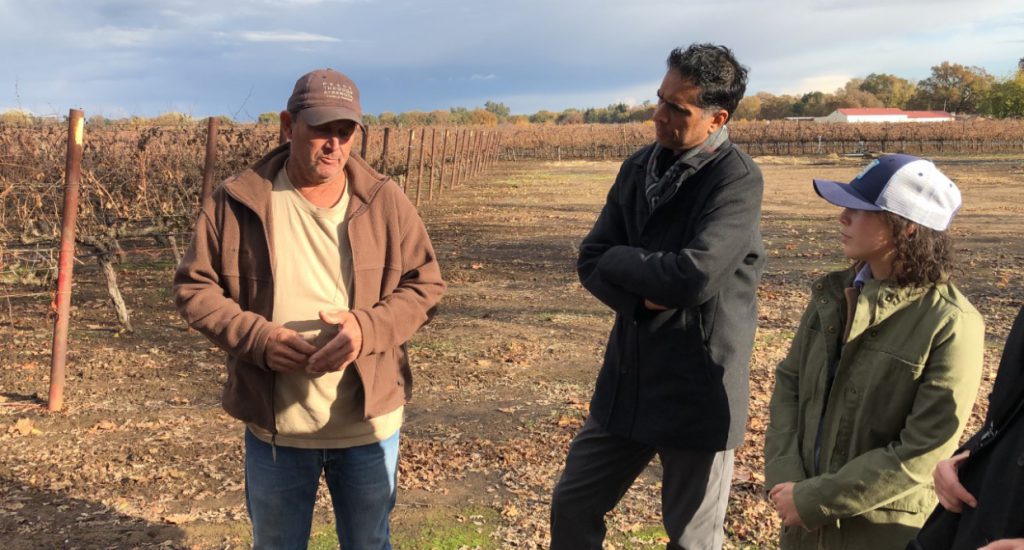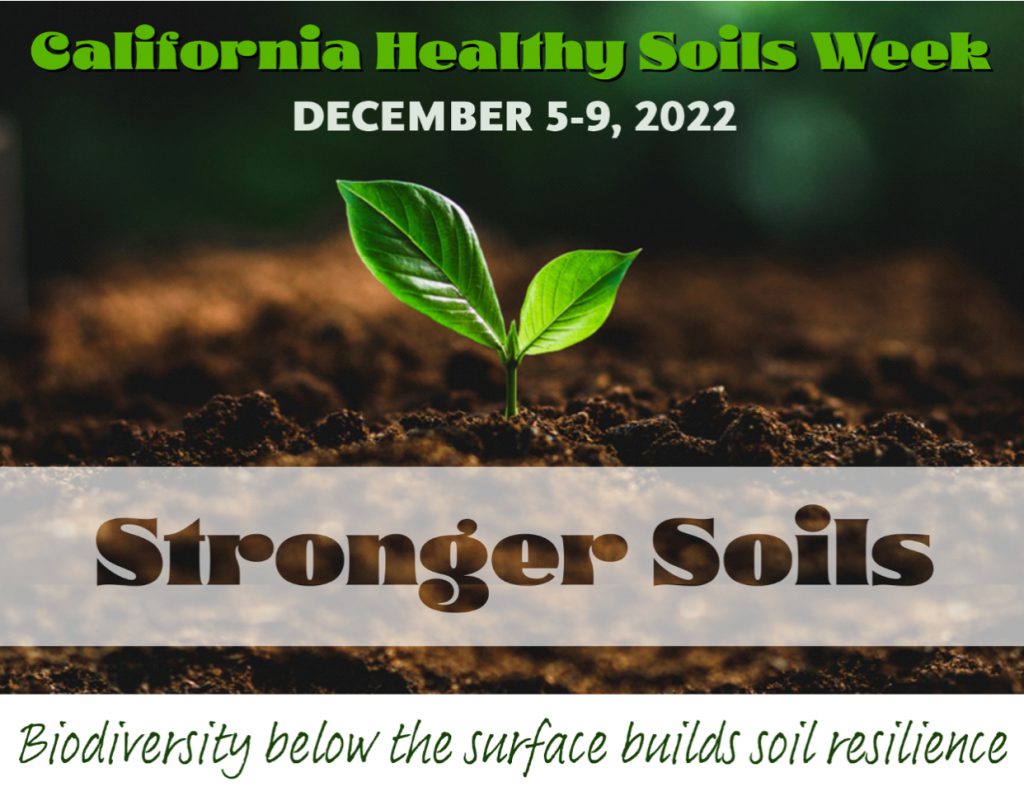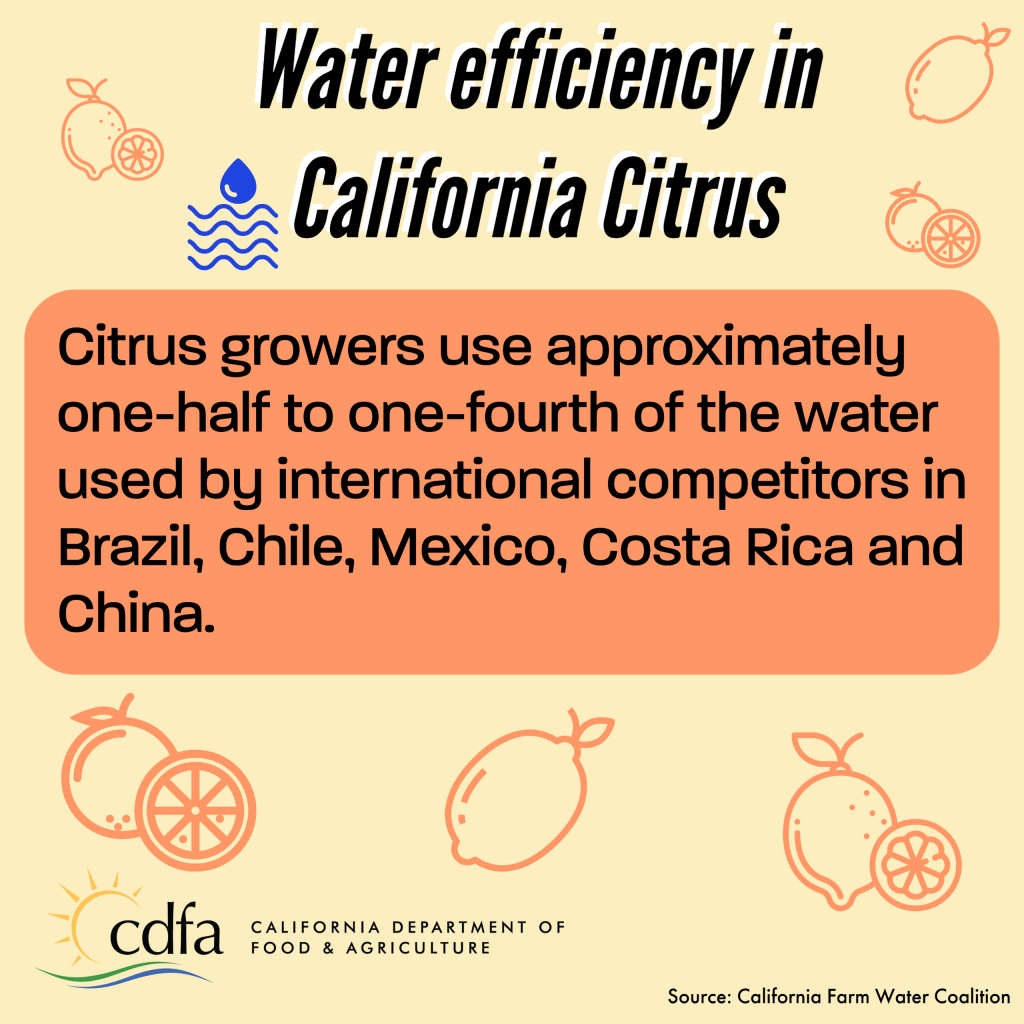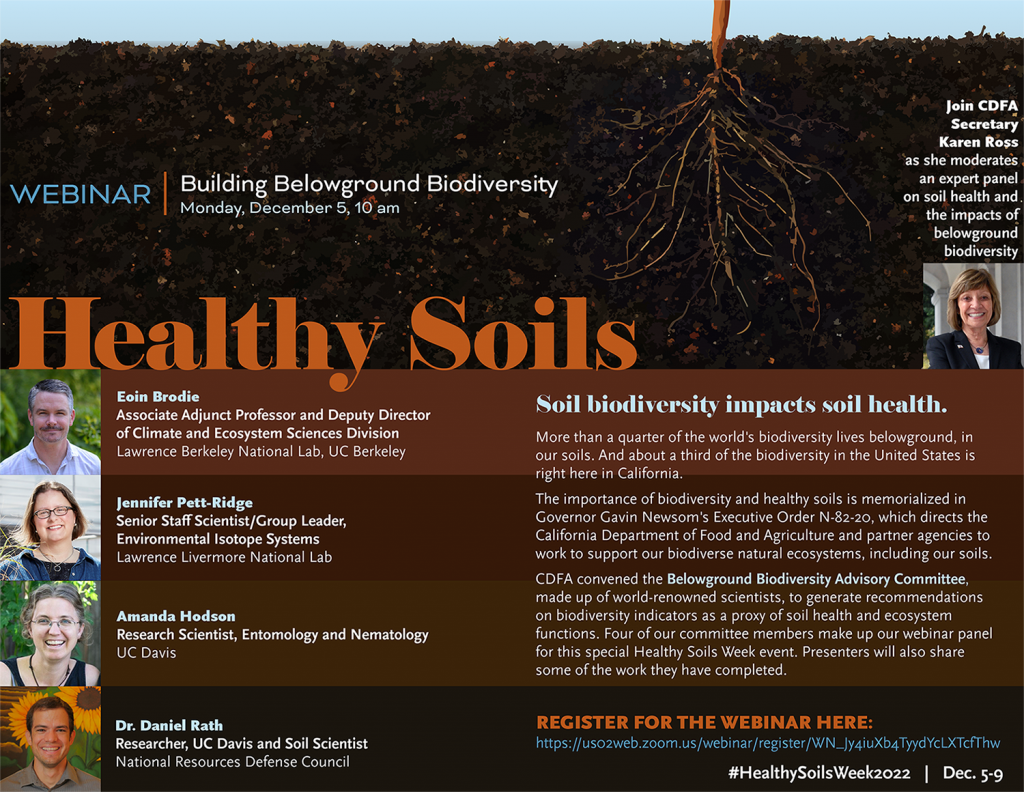-
Recent Posts
- A Thanksgiving Message from CDFA Secretary Karen Ross
- California at COP30: Why Showing Up Matters for the Future of Agriculture
- USDA Announces Disaster Assistance Funding, Expands Support for Specialty Crop Growers
- CDFA Honors Decades of Service at All-Staff IT Meeting
- Secretary Ross in Brazil for COP30 climate summit
Recent Comments
- Micah on Secretary Ross on Water, Workforce, and the Future of California Agriculture — from AgNet West
- CA agriculture value surpasses $60B | Western Livestock Journal on Value of California Ag production tops $60 billion for first time
- Kathy de Contreras on CDFA IT department honored at “Best of California” awards
- El costo económico de las deportaciones masivas ya es visible en California - Espanol News on Nine California Counties Make Top-10 List for Ag Sales in the U.S.
- Deportations are taking a toll on California’s economy – and have only just begun – The News Beyond Detroit on Nine California Counties Make Top-10 List for Ag Sales in the U.S.
Archives
- November 2025
- October 2025
- September 2025
- August 2025
- July 2025
- June 2025
- May 2025
- April 2025
- March 2025
- February 2025
- January 2025
- December 2024
- November 2024
- October 2024
- September 2024
- August 2024
- July 2024
- June 2024
- May 2024
- April 2024
- March 2024
- February 2024
- January 2024
- December 2023
- November 2023
- October 2023
- September 2023
- August 2023
- July 2023
- June 2023
- May 2023
- April 2023
- March 2023
- February 2023
- January 2023
- December 2022
- November 2022
- October 2022
- September 2022
- August 2022
- July 2022
- June 2022
- May 2022
- April 2022
- March 2022
- February 2022
- January 2022
- December 2021
- November 2021
- October 2021
- September 2021
- August 2021
- July 2021
- June 2021
- May 2021
- April 2021
- March 2021
- February 2021
- January 2021
- December 2020
- November 2020
- October 2020
- September 2020
- August 2020
- July 2020
- June 2020
- May 2020
- April 2020
- March 2020
- February 2020
- January 2020
- December 2019
- November 2019
- October 2019
- September 2019
- August 2019
- July 2019
- June 2019
- May 2019
- April 2019
- March 2019
- February 2019
- January 2019
- December 2018
- November 2018
- October 2018
- September 2018
- August 2018
- July 2018
- June 2018
- May 2018
- April 2018
- March 2018
- February 2018
- January 2018
- December 2017
- November 2017
- October 2017
- September 2017
- August 2017
- July 2017
- June 2017
- May 2017
- April 2017
- March 2017
- February 2017
- January 2017
- December 2016
- November 2016
- October 2016
- September 2016
- August 2016
- July 2016
- June 2016
- May 2016
- April 2016
- March 2016
- February 2016
- January 2016
- December 2015
- November 2015
- October 2015
- September 2015
- August 2015
- July 2015
- June 2015
- May 2015
- April 2015
- March 2015
- February 2015
- January 2015
- December 2014
- November 2014
- October 2014
- September 2014
- August 2014
- July 2014
- June 2014
- May 2014
- April 2014
- March 2014
- February 2014
- January 2014
- December 2013
- November 2013
- October 2013
- September 2013
- August 2013
- July 2013
- June 2013
- May 2013
- April 2013
- March 2013
- February 2013
- January 2013
- December 2012
- November 2012
- October 2012
- September 2012
- August 2012
- July 2012
- June 2012
- May 2012
- April 2012
- March 2012
- February 2012
- January 2012
- December 2011
- November 2011
- October 2011
- September 2011
- August 2011
- July 2011
- June 2011
Categories
- AG Vision
- Agricultural Education
- Agricultural Marketing
- Alternative Fuels
- Animal health
- Animal Welfare
- Asian Citrus Psyllid
- Biodiversity
- Border stations
- BSE
- Cannabis
- Cannella Panel
- Climate Change
- Climate Smart Agriculture
- Community-based Food System
- Conservation
- Dairy
- Drought
- Environment
- Fairs
- Farm Bill
- Farm Labor
- Farmers' Markets
- Fertilizer
- Food Access
- Food Safety
- Food Waste
- Glassy-winged Sharpshooter
- Growing California
- Healthy soils
- HLB
- Hydrogen
- Integrated Pest Management (IPM)
- Invasive Species
- Light Brown Apple Moth
- Livestock ID
- Measurement Standards
- Nutrition
- Organic agriculture
- Pierce's Disease
- Pollinators
- Specialty Crops
- State Board of Food and Agriculture
- Succession Planning
- Trade
- Uncategorized
Pages

Can travelers bring a cut Christmas tree into California? Yes, with conditions
Posted in Uncategorized
Leave a comment
Healthy Soils Week — composting and cover crops play important roles in soil health
The net benefits of composting and cover cropping were underscored as part of a Healthy Soils Week farm tour, as members of CDFA’s Office of Environmental Farming and Innovation (OEFI) and CalRecycle visited Spaletta Farm this week in Galt, California. The farm is a 65-acre property that produces walnuts and grapes.
“In the long-run, (composting) is good for the soil; there are savings in not needing as much fertilizer; it’s good for the plants; it’s good for the environment,” said farmer Pete Spaletta. “That we can utilize the waste materials and put it back in the soil – there’s nothing wrong with that.”
Indeed, composting and cover cropping are practices encouraged within the Healthy Soils Program for several co-benefits, including establishing pollinator habitats, reducing soil compaction, improving water infiltration, and preventing soil erosion, and water runoff. Soil erosion and water runoff are especially important for farms that are next to bodies of water, like Spaletta’s farm located near the Mokelumne River.
Established in 2016, the Healthy Soils Program stems from a multi-agency collaboration led by CDFA under the Healthy Soils Initiative. The objectives of the HSP are to increase statewide implementation of conservation management practices that improve soil health, increase carbon sequestration, and reduce greenhouse gas emissions. These objectives are achieved by providing financial incentives to California growers and ranchers to implement the practices.
Spaletta Farm is a 2020 Healthy Soils Program awardee. The project applies compost and mixed species cover crops once a year for three years, and annual soil samples are taken to evaluate success. These practices are expected to save more than 300 million metric tons of CO2-equivalent every year.
The Healthy Soils Program has awarded more than $100 million to more than 1,500 projects. The program is currently working on details for an additional $85 million that was allocated in the fiscal year 2022.
Posted in Uncategorized
Leave a comment
Healthy Soils Week — Healthy Soils save water!
As CDFA and its partners continue to observe Healthy Soils Week (through Friday), CDFA would like to emphasize that practices that boost organic matter in soil increase water-holding capacity in addition to reducing greenhouse gas emissions. These practices are valuable tools for drought and climate change. Read more here: https://www.cdfa.ca.gov/oefi/healthysoils/
Posted in Uncategorized
Leave a comment
Healthy Soils Week — biodiversity webinar kicks off series of events
CDFA Secretary Karen Ross kicked off the events of Healthy Soils Week by hosting a webinar to emphasize the importance and the impact of belowground biodiversity on soil health.
Secretary Ross introduced attendees to the Belowground Biodiversity Advisory Committee (BBAC) and highlighted the progress the committee has made over the past five months. The Secretary facilitated the panel discussion with Deputy Director for Climate and Ecosystem Sciences at the Lawrence Berkeley National Lab, Dr. Eoin Brodie. Secretary Ross and Dr. Brodie were joined by panelists Dr. Jeniffer Pett-Ridge from the Lawrence Livermore National Lab, Dr. Amanda Hodson of the University of California’s Jackson Soil and Root Ecology Lab, and Dr. Daniel Rath of the UC Davis Scow Soil Microbial Ecology Lab. The panelists answered questions from Secretary Ross and participated in a Q&A with the public.
Healthy soil practices improve soil water holding capacity, infiltration, and water availability and quality while reducing soil erosion, runoff, and dust. Soil health is central to food productivity and climate change resiliency. Secretary Ross acknowledged the soil underneath our feet being a living and breathing ecosystem that is vibrant and diverse.
CDFA created the BBAC to better understand how soil biodiversity may impact soil health. The committee is charged with preparing a report with recommendations on biodiversity indicators as a proxy of soil health and ecosystem functions. The committee is expected to present their final report and recommendation by March 2023. The report will inform the policies on nature-based solutions for Natural and Working Lands and further the state’s goal of carbon neutrality by 2045.
The committee is made up of world-renowned scientists from Lawrence Livermore National Lab, Stanford University, Colorado State University, University of California, and U.S. Department of Agriculture-Natural Resources Conservation Service.
To find out more about CDFA’s Healthy Soils Week and a full list of participating organizations, be sure to visit the Healthy Soils Week webpage.
WATCH: Full-length recording of the Healthy Soils Week BBAC Webinar
Posted in Uncategorized
Leave a comment
Stronger Soils — Secretary Ross kicks off Healthy Soils Week with discussion of benefits
Today is the UN’s World Soil Day, and CDFA is joining California partners in observing Healthy Soils Week through Friday. In this video, Secretary Karen Ross discusses the many benefits of improving the health and resilience of our soils.
Posted in Uncategorized
Leave a comment
CDFA to celebrate Healthy Soils Week (Dec 5-9) by promoting biodiversity and soil resilience
California Healthy Soils Week 2022 will kick off December 5 with United Nations’ World Soil Day. CDFA and Agriculture and partner organizations from across the state will host a series of events highlighting soil health and biodiversity. CDFA Secretary Karen Ross will provide opening remarks via video on Dec. 5.
This year’s theme is “Stronger Soils: Biodiversity Below the Surface Builds Soil Resilience,” which highlights the importance of soil health across farms, ranches, urban landscaping, and home and community gardens.
A number of agencies and organizations are joining CDFA for the weeklong event. There will be webinars, live streams, panel discussions, and at-home how-to activities. Healthy Soils Week partners will be posting, tweeting, and sharing on social media throughout the week to reach as many people as possible with information about building soil health and fostering climate resilience.
Among the many benefits of soil health practices are the following:
- Improved plant health and yields;
- Increased water infiltration and retention;
- Sequestered carbon and reduced greenhouse gases (GHGs);
- Reduced sediment erosion and dust;
- Improved water and air quality; and
- Improved biological diversity and wildlife habitat.
Visit the Healthy Soils Week website to see the full lineup of events and partners. To follow along on social media, watch for and use the hashtags #SoilHealth and #HSW2022.
Posted in Uncategorized
Leave a comment
CDFA joins partners at USDA, UC and CARCD in agreement to streamline services to land managers
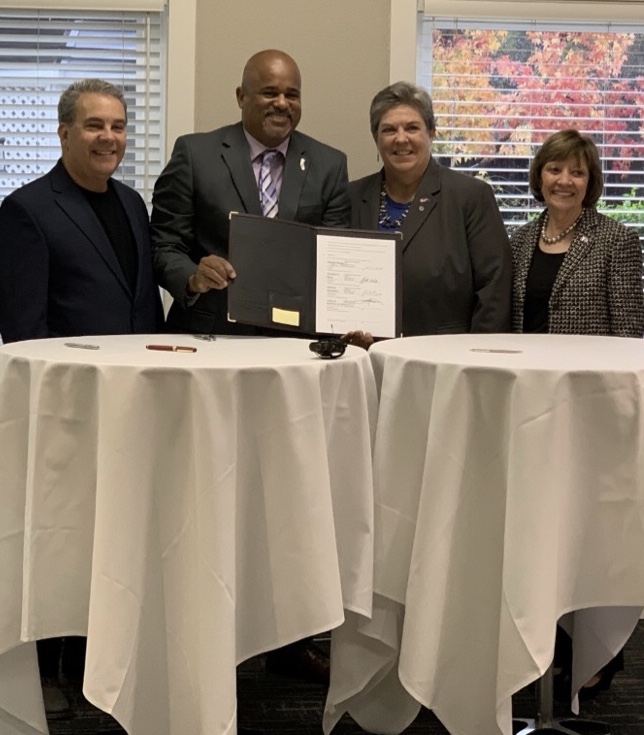
Secretary Karen Ross participated in an a signing ceremony today committing CDFA to an agreement with partners including the Natural Resource Conservation Service (NRCS), the University of California Agriculture and Natural Resources (UC ANR), and the California Association of Resource Conservation Districts (CARCD).
A memorandum of agreement binds the parties together as the California Conservation Planning Partnership. The signatories will work together to streamline their services when assisting land managers like farmers, ranchers, and foresters who are implementing conservation and climate-smart agriculture practices on their lands.
While these organizations have worked together for many decades, there is significant coordination required to ensure they are providing services to historically underserved farmers and ranchers; offering coordinated advice about on-farm practices; and working to provide on-the-ground technical assistance providers with the resources they need to rapidly scale up climate-smart practices to address climate change.
The partners will provide joint trainings and materials, work to address barriers to the adoption of practices, and collaborate to better disseminate the latest research to technical assistance providers. Follow-up workshops will be held in January and March.
Posted in Uncategorized
2 Comments
Climate smart ag collaboration between California and the Netherlands

California and the Netherlands continue their longstanding partnership on Climate Smart Agriculture, first established in 2015 with a visit by CDFA Secretary Karen Ross to the Netherlands. The two governments share opportunities for innovation within the food sector to reduce greenhouse gas emissions, enhance a circular agricultural economy, and further on-farm practices for sustainability.
The Netherlands-California Sustainable Dairy Summit this week in Sacramento connected government, business and academia around policy and research priorities related to dairy farming and a sustainable dairy sector. CDFA’s Office of Environmental Farming and Innovation (OEFI) was one of the key presenters at the event, sharing information about manure management programs at the agency.
Posted in Climate Change, Climate Smart Agriculture, Dairy, Uncategorized
Tagged climate change, Karen Ross
Leave a comment
California citrus growers — leaders in production and water efficiency
Citrus is a way of life for our state! California leads the nation in tons and value of citrus production., and the US is also among the top-five citrus producers in the world. Of course, citrus depends on responsible water stewardship, and many California growers use advanced technology with soil moisture monitors and micro-sprinklers to water their trees. Read more about the water efficiency of California commodities at the California Farm Water Coalition web site.
Posted in Uncategorized
Leave a comment
Building Belowground Biodiversity: A Free Webinar for Healthy Soils Week
Healthy Soils Week is December 5-9, 2022
More than a quarter of the world’s biodiversity lives belowground, in our soils. And about a third of the biodiversity in the United States is right here in California.
California farmers and ranchers understand the fundamental importance of the soil that is the foundation of their work – and scientists are working to help all of us understand it even better. Join a panel of experts on Monday, December 5 for a free webinar: Building Belowground Biodiversity.
The California Department of Food and Agriculture is working alongside our growers to improve soil health, in part by convening the Belowground Biodiversity Advisory Committee, made up of world-renowned scientists, to generate recommendations on biodiversity indicators as a proxy of soil health and ecosystem functions. Four of our committee members make up our webinar panel for this special Healthy Soils Week event. Presenters will also share some of the work they have completed.
Click here to register for “Building Belowground Biodiversity” scheduled for World Soil Day, Monday December 5, at 10 am.
The importance of biodiversity and healthy soils is memorialized in Governor Gavin Newsom’s Executive Order N-82-20, which directs the California Department of Food and Agriculture and partner agencies to work to support our biodiverse natural ecosystems, including our soils.



